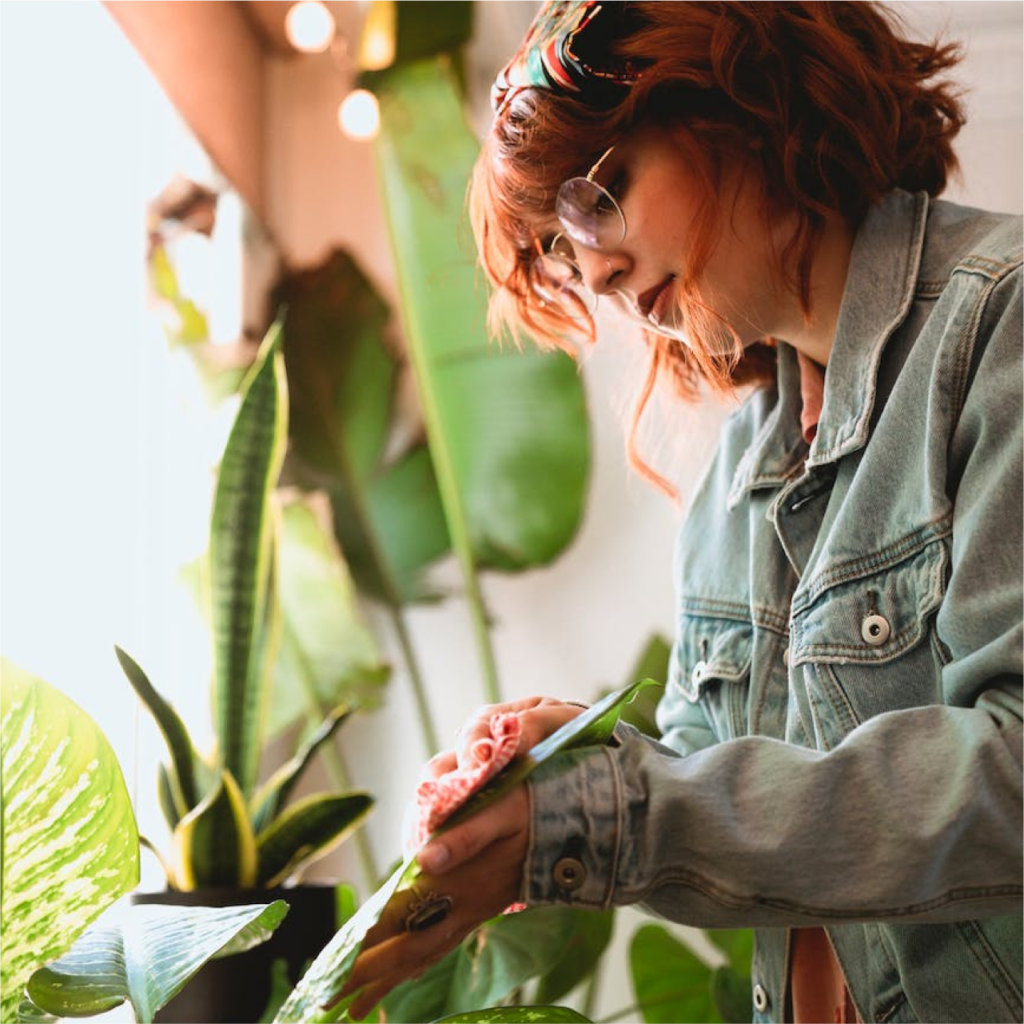Ok, some of you may be asking yourself, why do I need to clean my indoor plants?
Well, just like your closet, or under your bed, your indoor plants are probably collecting large amounts of dust and could really use a deep cleaning!
In this post, we will discuss the common reasons why you should keep clean houseplants in your indoor plant garden, as well as some great how-to tips on how to do so.
Whys should we clean our houseplants?
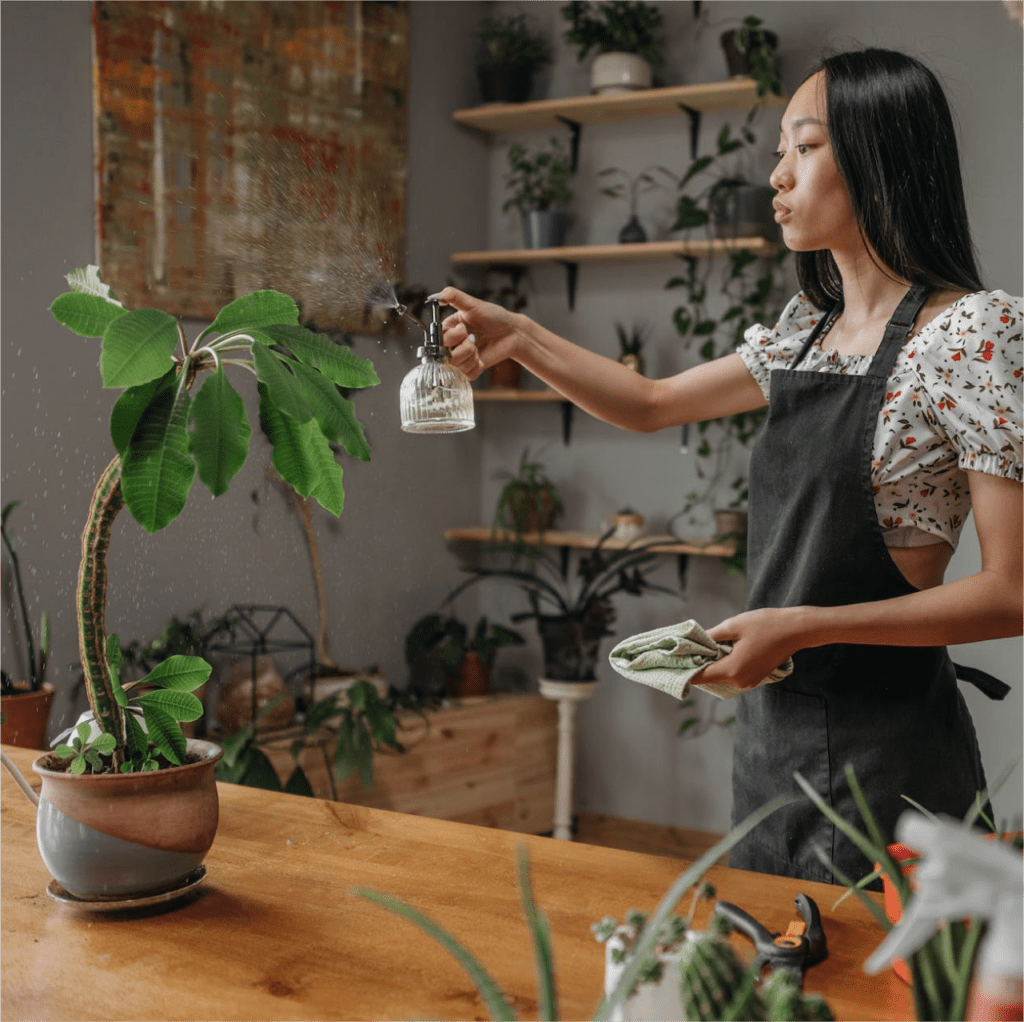

As any green-thumbed gardener knows, house plants are a great way to add a splash of color and life to your home or office space. Not only do they help to purify the air, but they can also boost your mood and improve your overall health and well-being.
However, keeping your plants healthy and vibrant can be its own challenge, especially if you don’t remember to clean them on a regular basis.
Here are just a few reasons why it’s important to clean your houseplant leaves
First of all, the obvious reason is dust and dirt can build up on the plant’s leaves. This can block out sunlight and prevent the plant from photosynthesizing properly. This in return can lead to yellowing leaves and stunted growth! In addition, dirty leaves are more susceptible to pests and diseases. By regularly cleaning your plants, you can help them stay healthy and vigorous.
Secondly, most houseplants prefer to live in a humid environment. However, the air inside our homes is often dry, which can stress the plants by causing the leaves to become dehydrated and brittle.
Regularly misting your plants will help to keep them semi-clean, and hydrated as well as prevent them from becoming damaged.
Finally, as a plant parent cleaning your house plants is a great way to connect with them and show them some love! Just like how we people feel better after a shower, your plants will as well! Honestly, who doesn’t appreciate a relaxing spa day?
When should we clean our houseplants?
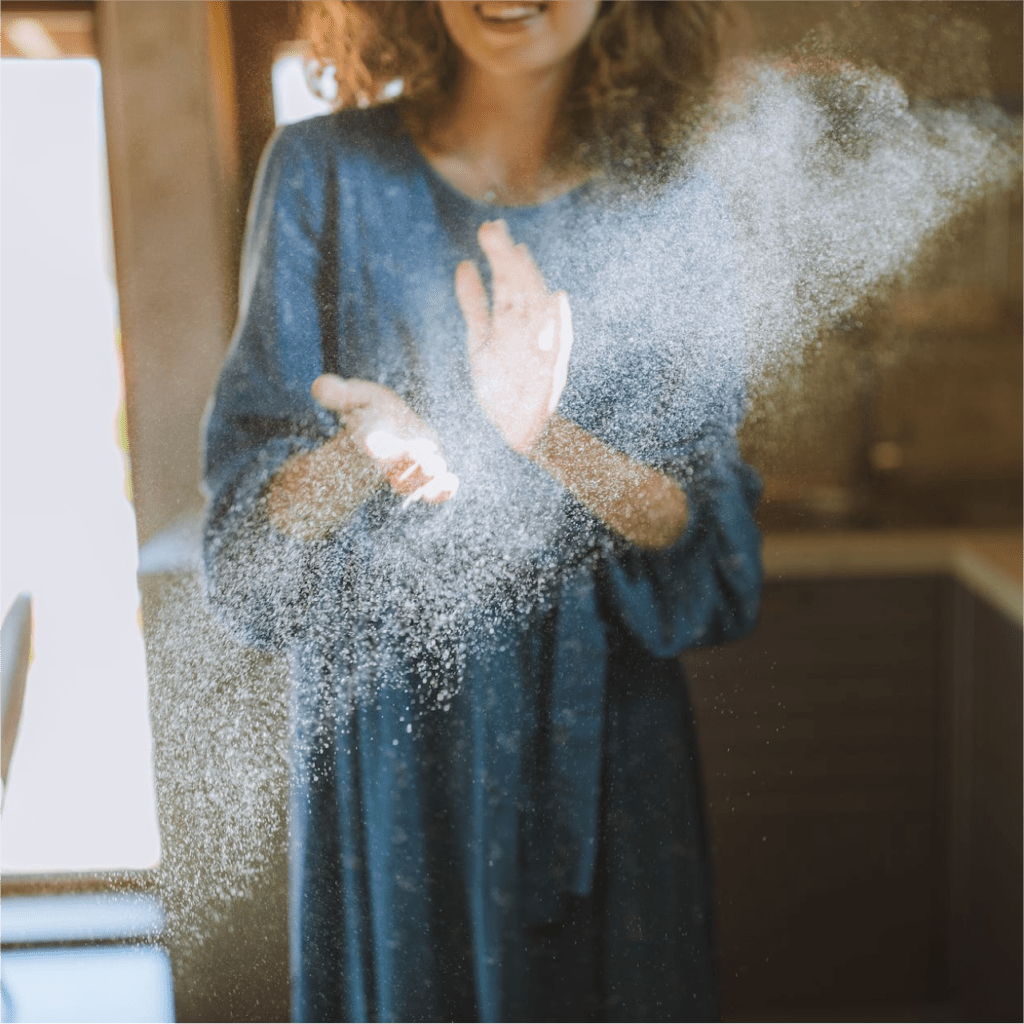

Many houseplants are super low-maintenance, but they still need to be cared for, in order to thrive. One untalked-about but important aspect of plant care is cleaning the plant’s leaves.
Dust and dirt can build up on plant leaves, stems, and flowers, obscuring the plant’s natural beauty. When left in this state, annoying pests such as aphids and spider mites can easily hitch a ride into your home or space and then infest dirty plants. Dry dusty leaves are the perfect breeding ground for these pests and once established can be tricky to get rid of.
So when?
There is no hard and fast rule for how often to clean your plants.
This will depend on the type of plant and the rate at which dirt and dust will build up.
Everyone’s home is different and the rate and level of dust build-up will differ according to their location and lifestyle. If you live in a downtown environment and leave doors and windows open like mine, dust can build up quickly!
So be mindful to check in on your indoor plants, If you notice the plant leaves are losing their glossy look by the accumulation of dust, it’s probably a good time to give them a spa treatment.
However, as a general guideline, most houseplants or plant leaves should be cleaned at least once every month or two.
The shortlist: How to clean your house plants
- To clean your plants, simply wipe the leaves down with a damp cloth or spray them with water from a hose or spray bottle.
- If the leaves are especially dusty or dirty, you may need to give them a more thorough washing with mild soap and water.
- Once you’ve wiped down the leaves, don’t forget to clean the pot as well. Wipe away any dirt or grime from the surface of the pot and rinse out the drainage holes to prevent them from becoming clogged. By taking the time to clean your houseplants, you’ll keep them looking their best and help them stay healthy for years to come.
Pro-tip:
Do not rinse off your plants soon after watering, there is a good chance a lot of water will flow down into the container saturating the soil, and on top of a recent watering may cause them to rot. It is best to wait until the next watering cycle for your plant children’s spa day!
Step-by-step instructions: Roll up your sleeves and let’s get our hands dirty!
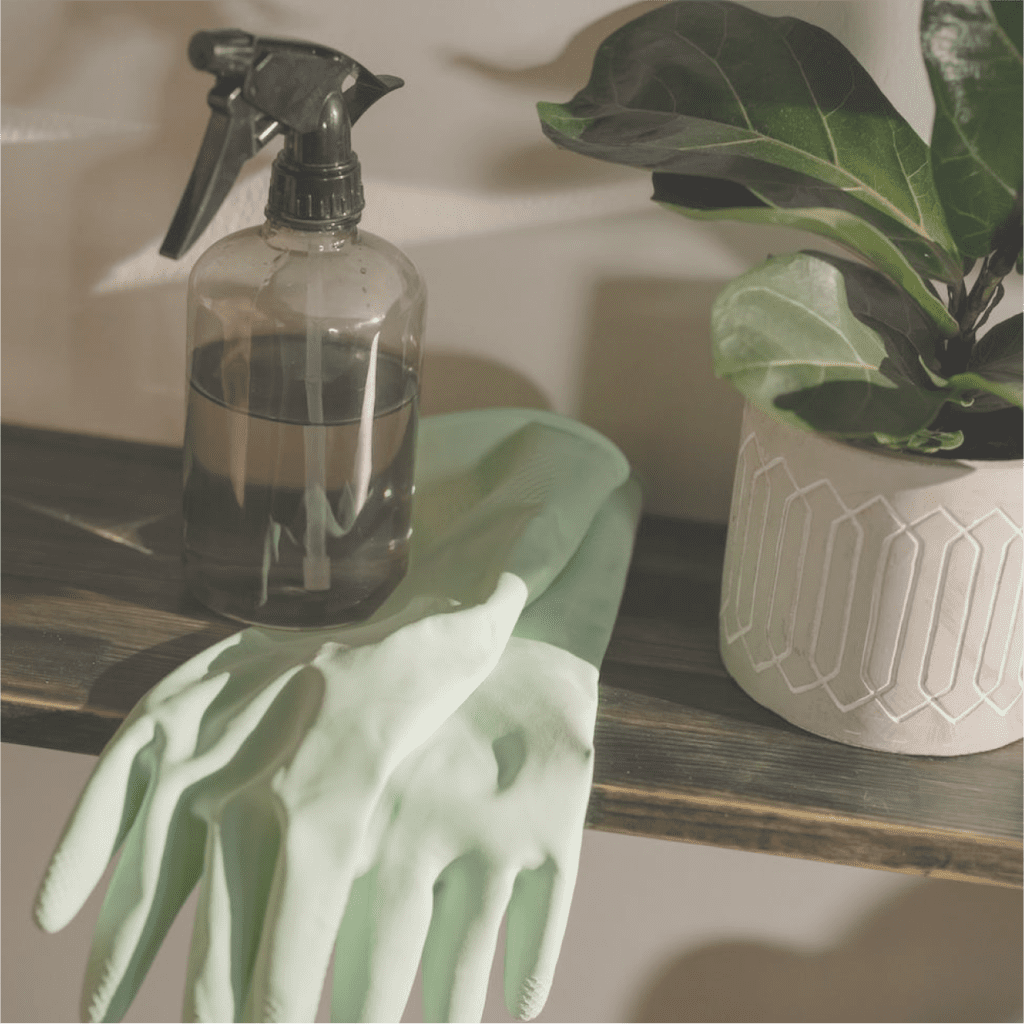

Step One: Gather Your Supplies
Before you start cleaning your plants, you’ll need to gather a few supplies.
- A water source whether indoors or out
- Castile soap or gentle insecticidal soap
- A soft brush or sponge
- A soft cloth or towel, preferably Microfiber
- Rubbing alcohol 70%
- Distilled vinegar
- A spray bottle or two
- Gloves (optional)
I like to use Dr. Wood’s Pepper mint and Tea tree oil Castile Soap because it’s gentle yet effective!
If you have space outdoors for your plant’s spa day…
Choose a spot outside where the water runoff of your indoor plant can benefit your lawn or other outdoor plants.
You’ll also want to make sure you have a clean shady spot picked out where you can put your plants after their bath. This will ensure your indoor plant doesn’t experience too much of a shock from a sudden change in temperature or overexposure to direct sunlight.
No outdoor space, no worries…
I have lived in spaces with easy access to an outdoor garden hose, as well as an apartment and condo. And for the ladder, I have found the kitchen sink, bathroom tub or shower is a great space to clean your indoor plant.
I will generally install a shower head in my bathroom with an attached hose to help with this process. I find it really comes in handy when living in a condo or apartment.
This added feature is not only great for bathing the plants or washing the dog, but also great for people using the shower. This step may require a little more effort, but all worth it in the long run!
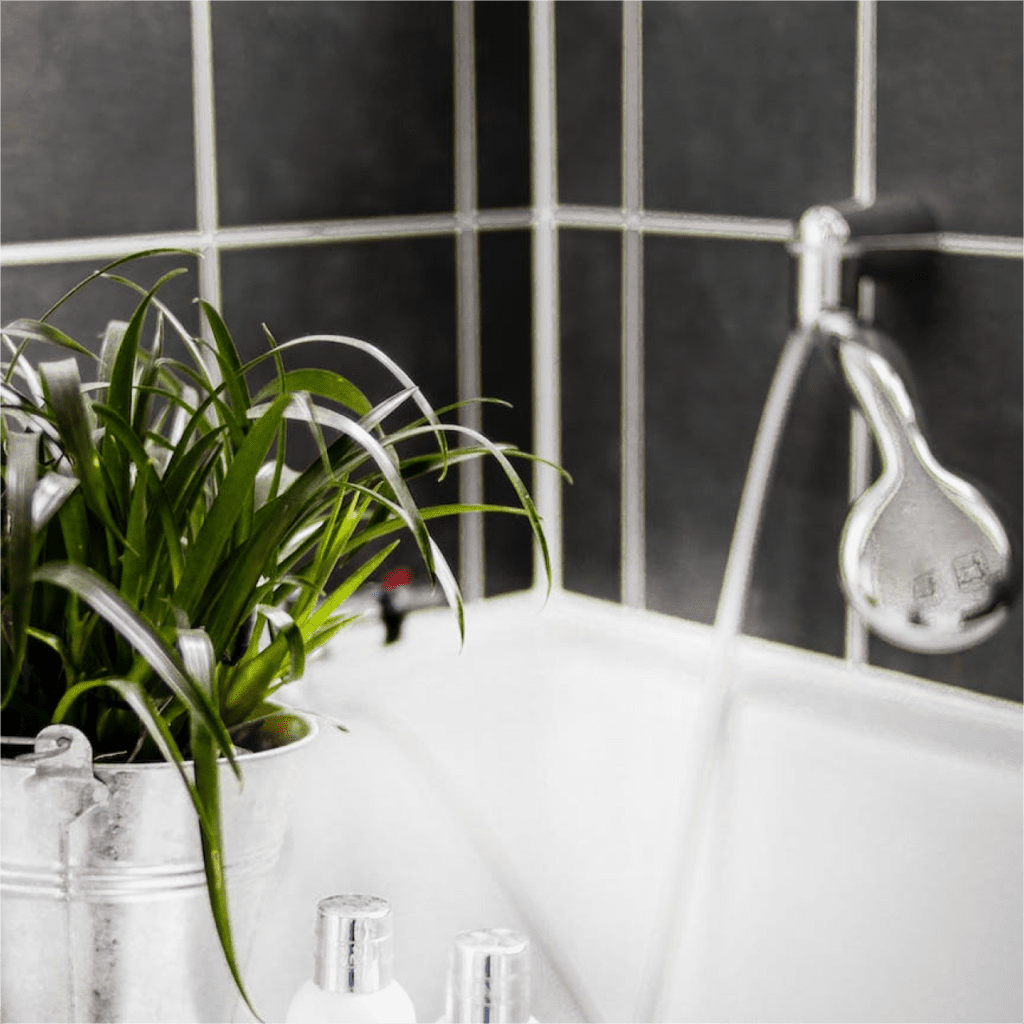

Step Two: Let’s get the Plants Wet!
Once you have everything you need in place, it’s time to start getting your plants wet. You want to use tepid or lukewarm water, neither hot nor cold water for this process to avoid shocking or burning the plant’s leaves.
I prefer to give the entire plant a good rinsing to start. This will remove the bulk of the dust and grime that has been collected on your plant leaves.
While rinsing I will also take the time to take a closer look at the plant leaves, and soil surface, considering this like a doctor’s check-up. I particularly pay close attention to the plant leaves for pests that I may not have noticed before. I usually look for white sticky pests like melee bugs or gray patchy areas, which may indicate spider mites.
If you find unexpected pests, consider it a blessing to have caught them in time before they spread to other plants.
Step Three: Scrub-a-Dub-Dub
Now that your plants are nice and wet, it’s time to give them a good scrubbing with your soft brush. Focus on the parts of the plant that collect the most dust, like leaves and stems. For especially dirty areas, you can mix up a solution of 1 tablespoon of soap per gallon of water and pour it into a spray bottle. Then give your plants a good spritz before scrubbing.
Once you’ve finished scrubbing, give your plants another rinse with plain water to make sure all the soap is gone.
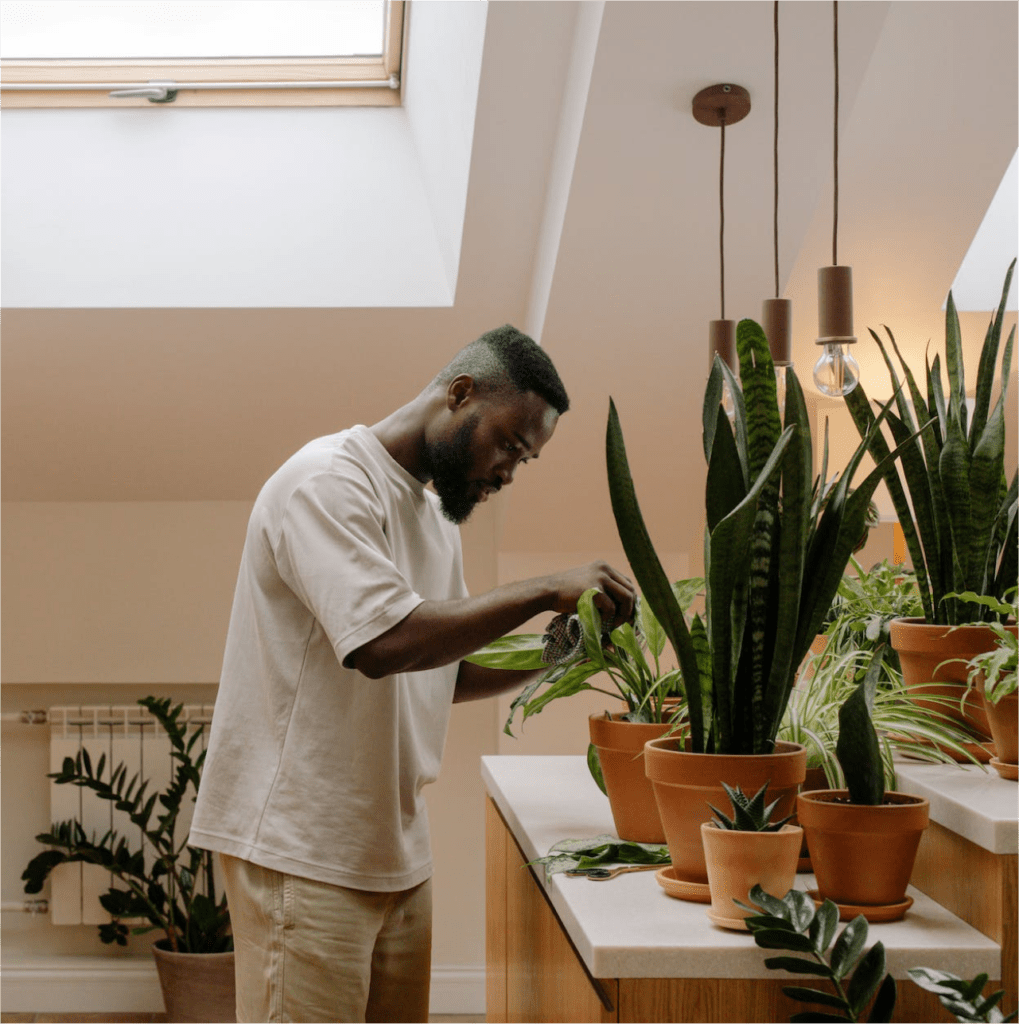

Step Four: Time to Dry Off
After your plants have been thoroughly cleaned and rinsed, it’s time to move them to their shady spot so they can dry off. For this step, you can use a microfiber towel to dry the leaves to avoid hard water spots.
Let them stay there for an hour or so before bringing them back to their normal spot. And that’s it! A few simple steps are all it takes to keep your plants looking (and feeling) their best.
Note: For hard water build-up on the leaves
If you have hard water spots building up on your plant leaves, here is where the vinegar will come in. I know you were wondering what that was for.
Mix one part vinegar with two parts water in a spray bottle. Spray the plant leaves with this concoction and let them sit for 15-20 minutes. then wipe with a clean microfiber towel.
You will be amazed at how well this works without harming the plant. Actually, this will not only provide a nice leaf shine but will also contribute to the overall plant health.
So what do you do if you cannot drag a large plant or tree into a space for a good rinsing?
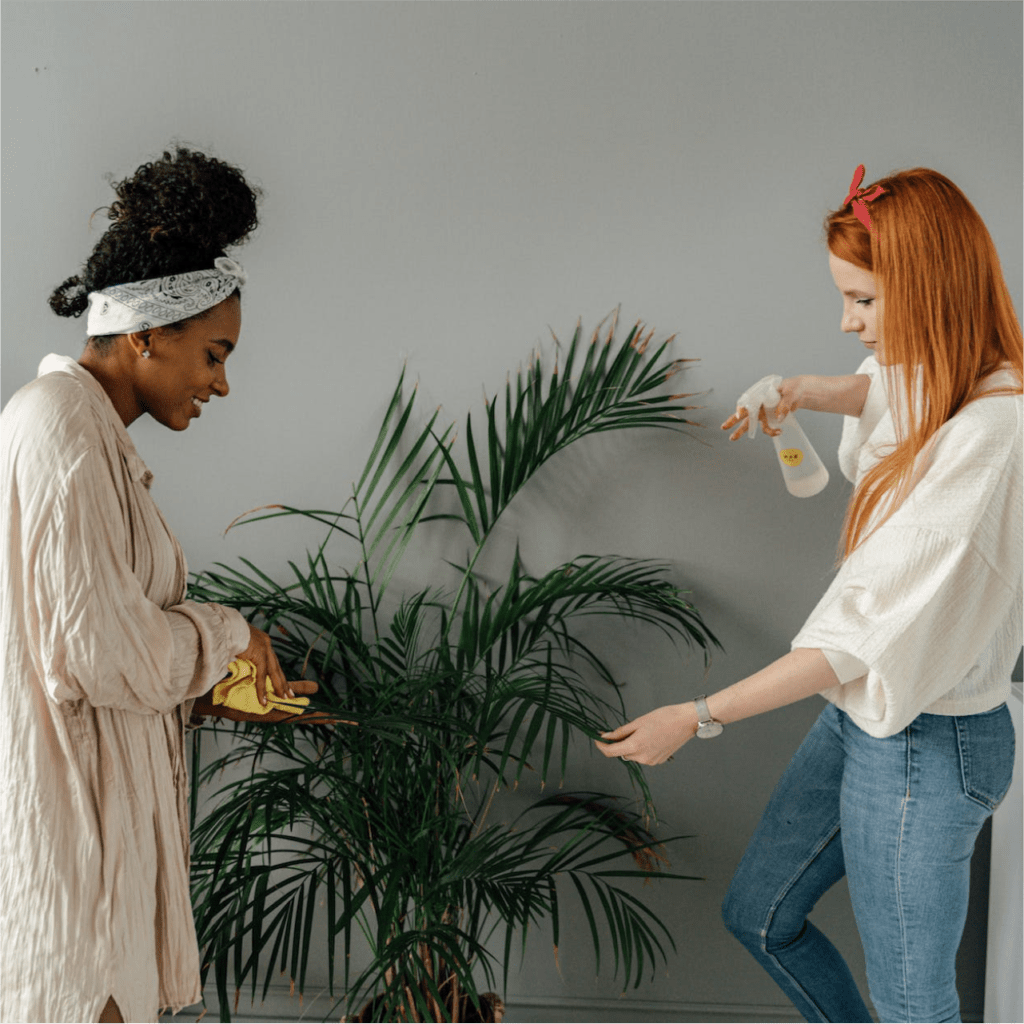

If the plant or indoor tree that is due for good cleaning is too large or just lives in an unmovable planter, no worries theplantblogger.com has you covered! Here’s what you can do:
- Cover the floor and surrounding area with towels, and remove anything from the area that may be damaged by moisture or water.
- Fill a pump sprayer with distilled lukewarm water and spray the plant down from top to bottom.
- Inspect the houseplant leaves for pests or potential health issues.
- Lastly use a soft cloth to gently wipe down your houseplant leaves.
Note, If you have any doubt that your plant may have some kind of pests, err on the side of caution and use a solution of one part rubbing alcohol with 2 parts distilled water and spray the plant down from top to bottom. This solution can be left on the houseplant leaves to dry or wiped off after 30 minutes.
I washed my plants but I still see melee bugs or spider mites.
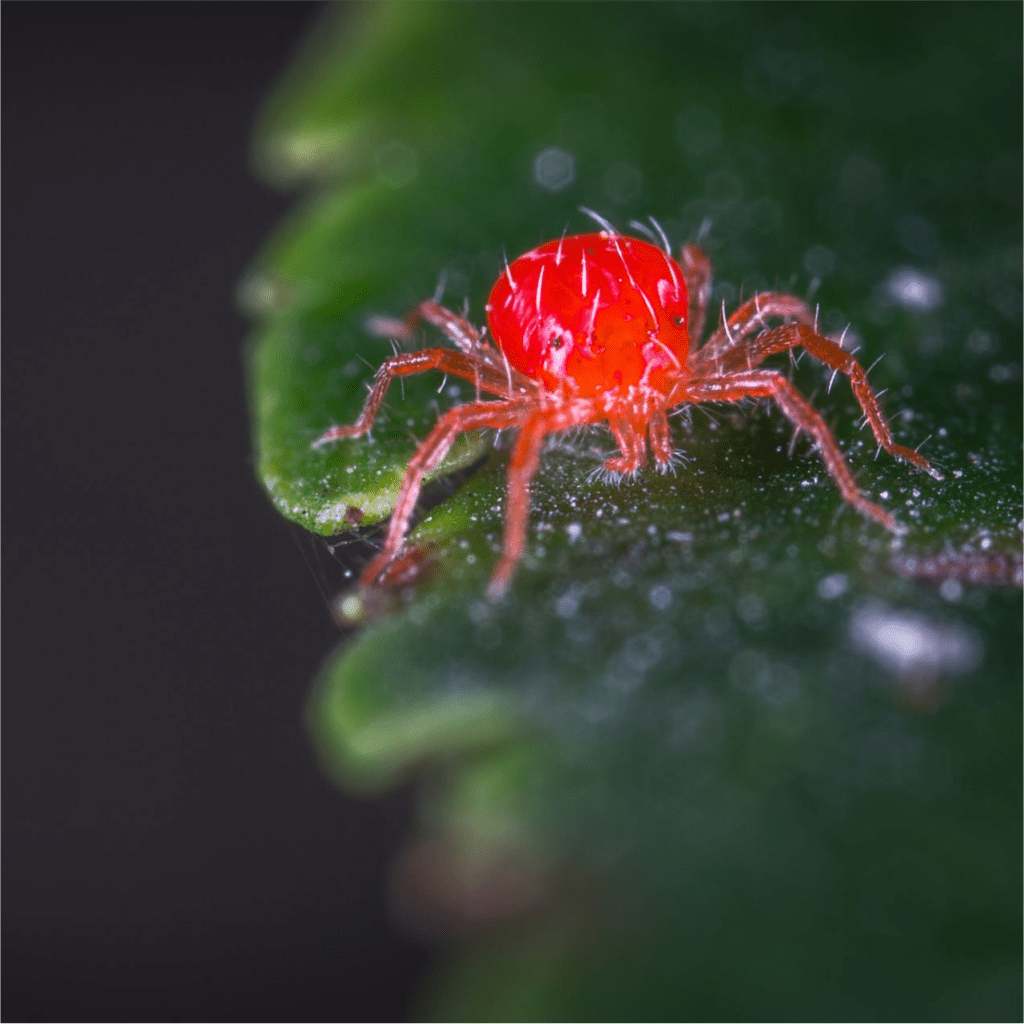

These stubborn pests can become very frustrating, and once established they can be tricky to remove!
There are a couple of ways to treat this issue:
- Consider repeating the above steps for cleaning plant leaves once a month until the pest is gone. This step will need to be used with caution so as to not flood the root systems and cause root rot! Also consider wrapping the base of the plant, soil, and pot with plastic wrap to shield the excess water from filling the planter.
- In conjunction with washing and rinsing the plant leaves, mix a solution of one part rubbing alcohol with 2 parts distilled water and spray the plant down from top to bottom. Use a soft brush or cloth to gently brush and clean the plant leaves.
- Lastly, if it continues to persist, consider new fresh soil, sometimes the pest can hide out in the top layer of soil, which can make it difficult to eliminate.
What about sticky or fuzzy leaves?
Plant leaves that are fuzzy can follow most of the standard steps above, using lukewarm water to gently rinse them. I find it is best to towel dry fuzzy leaves right away to avoid water spots or other issues.
Sticky leaves can either be the plant’s natural way of secreting sugar to attract beneficial insects in the wild or, it can be a sign that you may have a potential pest issue. Look for small white fuzzy bugs called melee bugs and follow the steps above for the elimination of melee bugs and spider mites.
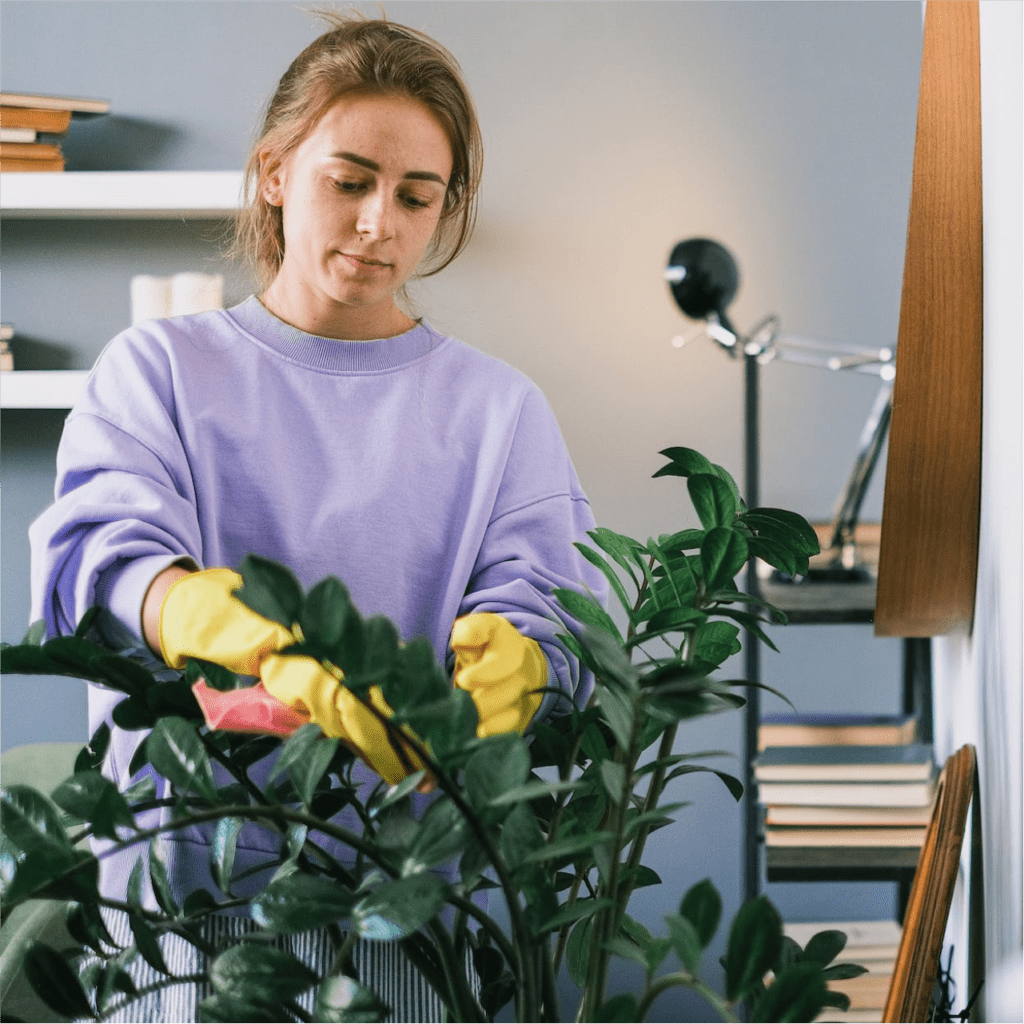

Thank you for reading my Post on cleaning your houseplants.
I hope you have not only enjoyed reading this post on cleaning your house plants, but I also hope that it has inspired you to pay closer attention to your indoor garden and plant children.
Removing dust build-up from your plant leaves and inevitably your home, will not only improve your plant’s health but also your own.
Remember to periodically check your plant leaves to know when it’s best for their next spa day!
Subscribe to theplantbloggers.com email list to stay informed on topics to keep your plants growing beautifully.
